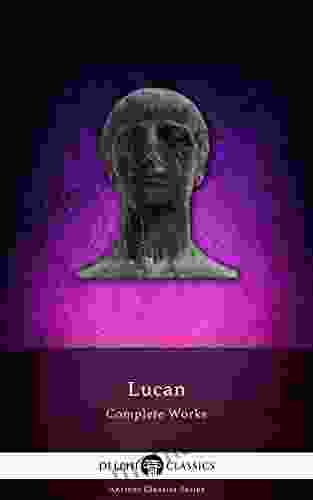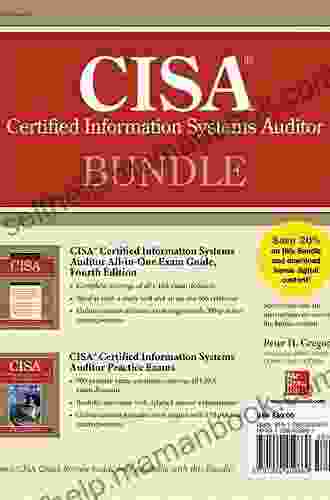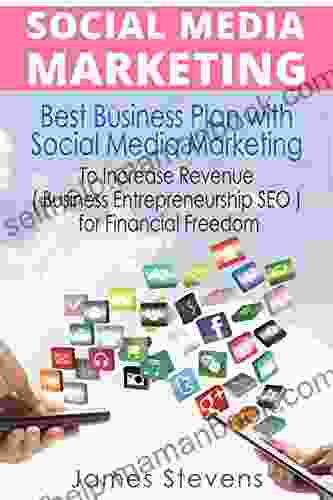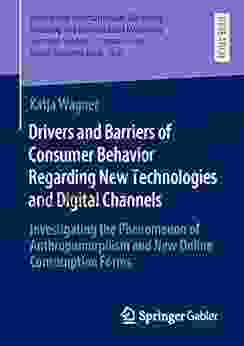Drivers and Barriers of Consumer Behavior Regarding New Technologies: A Comprehensive Analysis

In today's rapidly evolving technological landscape, understanding the factors that drive and hinder consumer adoption of new technologies has become increasingly crucial for businesses and policymakers. This article presents a comprehensive analysis of the key drivers and barriers influencing consumer behavior towards new technologies. By unraveling the complexities of consumer perceptions, motivations, and challenges, we aim to shed light on the crucial factors that shape the adoption and usage of new technologies.
1. Perceived Usefulness and Value:Consumers are more likely to adopt new technologies that they perceive as providing tangible benefits and solving real-world problems. The perceived usefulness of a technology plays a critical role in determining its adoption rate.
2. Relative Advantage:Consumers evaluate new technologies based on their relative advantage over existing options. If a new technology offers substantial benefits, such as improved efficiency, convenience, or cost savings, it is more likely to be adopted.
4.7 out of 5
| Language | : | English |
| File size | : | 2483 KB |
| Text-to-Speech | : | Enabled |
| Screen Reader | : | Supported |
| Enhanced typesetting | : | Enabled |
| Word Wise | : | Enabled |
| Print length | : | 196 pages |
3. Compatibility:Consumers prefer technologies that are compatible with their existing habits, routines, and technological infrastructure. Compatibility reduces the perceived risk associated with adoption and makes the transition to a new technology smoother.
4. Trialability and Experimentation:Consumers often experiment with new technologies before committing to their purchase. Trialability, such as free trial periods or demo versions, allows consumers to experience the benefits firsthand and reduce the uncertainty surrounding adoption.
5. Social Influence:Consumers are influenced by the behaviors and experiences of others. Positive word-of-mouth, endorsements from trusted sources, and social media discussions can drive technology adoption.
1. Perceived Complexity:Consumers may be hesitant to adopt new technologies that they perceive as difficult to understand or use. Complexity increases the perceived risk associated with adoption and can deter consumers from making a purchase.
2. Lack of Awareness:Consumers cannot adopt technologies they are not aware of. Limited marketing efforts, lack of accessibility, and poor communication can hinder the diffusion of new technologies.
3. Cost and Financial Barriers:The cost of new technologies can be a significant barrier to adoption, especially for low-income consumers. High upfront costs or subscription fees can limit accessibility and discourage adoption.
4. Security and Privacy Concerns:Consumers are increasingly wary of the security and privacy implications of new technologies. Fears of data breaches, identity theft, and privacy violations can hinder adoption.
5. Habitual Behavior:Consumers tend to stick to familiar routines and technologies. Breaking established habits can be challenging, and new technologies may struggle to overcome the inertia of existing practices.
1. Demographic and Psychographic Factors:Consumer behavior towards new technologies can vary based on demographic factors such as age, gender, education, and personality traits. Younger consumers, for example, are typically more open to new technologies than older consumers.
2. Cultural and Social Factors:Cultural values, social norms, and technological infrastructure can influence consumer behavior. In some cultures, new technologies may be embraced more readily than in others.
3. Economic Conditions:Economic conditions can impact consumer spending and willingness to invest in new technologies. During economic downturns, consumers may prioritize essential purchases over discretionary technology items.
4. Technological Sophistication:Consumers with higher levels of technological sophistication are more likely to be early adopters of new technologies. They are more comfortable using complex devices and are more aware of the potential benefits of new technologies.
Understanding the drivers and barriers of consumer behavior regarding new technologies has significant implications for businesses and policymakers:
Businesses:
- Focus on developing technologies that provide tangible benefits and solve real-world problems.
- Ensure compatibility with existing technologies and reduce perceived complexity.
- Provide opportunities for trialability and experimentation to lower perceived risk.
- Leverage social influence by encouraging positive word-of-mouth and endorsements.
Policymakers:
- Promote awareness and accessibility of new technologies, especially for underrepresented groups.
- Consider financial incentives and subsidies to reduce cost barriers to adoption.
- Implement regulations to address security and privacy concerns, fostering trust among consumers.
- Educate consumers about the benefits of new technologies and address their concerns.
Consumer behavior towards new technologies is a complex interplay of drivers and barriers. By understanding the key factors that influence adoption, businesses and policymakers can develop effective strategies to promote innovation and ensure the widespread adoption of new technologies.
Furthermore, ongoing research and analysis are essential to stay abreast of evolving consumer perceptions and behaviors. As the technological landscape continues to change rapidly, it is crucial to remain adaptable and responsive to the evolving needs and preferences of consumers. By leveraging the insights presented in this article, businesses and policymakers can navigate the challenges and seize the opportunities presented by the transformative power of new technologies.
4.7 out of 5
| Language | : | English |
| File size | : | 2483 KB |
| Text-to-Speech | : | Enabled |
| Screen Reader | : | Supported |
| Enhanced typesetting | : | Enabled |
| Word Wise | : | Enabled |
| Print length | : | 196 pages |
Do you want to contribute by writing guest posts on this blog?
Please contact us and send us a resume of previous articles that you have written.
 Top Book
Top Book Novel
Novel Fiction
Fiction Nonfiction
Nonfiction Literature
Literature Paperback
Paperback Hardcover
Hardcover E-book
E-book Audiobook
Audiobook Bestseller
Bestseller Classic
Classic Mystery
Mystery Thriller
Thriller Romance
Romance Fantasy
Fantasy Science Fiction
Science Fiction Biography
Biography Memoir
Memoir Autobiography
Autobiography Poetry
Poetry Drama
Drama Historical Fiction
Historical Fiction Self-help
Self-help Young Adult
Young Adult Childrens Books
Childrens Books Graphic Novel
Graphic Novel Anthology
Anthology Series
Series Encyclopedia
Encyclopedia Reference
Reference Guidebook
Guidebook Textbook
Textbook Workbook
Workbook Journal
Journal Diary
Diary Manuscript
Manuscript Folio
Folio Pulp Fiction
Pulp Fiction Short Stories
Short Stories Fairy Tales
Fairy Tales Fables
Fables Mythology
Mythology Philosophy
Philosophy Religion
Religion Spirituality
Spirituality Essays
Essays Critique
Critique Commentary
Commentary Glossary
Glossary Bibliography
Bibliography Index
Index Table of Contents
Table of Contents Preface
Preface Introduction
Introduction Foreword
Foreword Afterword
Afterword Appendices
Appendices Annotations
Annotations Footnotes
Footnotes Epilogue
Epilogue Prologue
Prologue Reta Halteman Finger
Reta Halteman Finger Amber Foster
Amber Foster Barbara Taylor Bradford
Barbara Taylor Bradford V R Christensen
V R Christensen Jen Coffel
Jen Coffel Scott Hutchins
Scott Hutchins Becky Tallentire
Becky Tallentire Jayne Calvin
Jayne Calvin Shawn D Guiont
Shawn D Guiont Marjori Krebs
Marjori Krebs Clea Translations
Clea Translations Dr Humaira Kay
Dr Humaira Kay Susanne Hope
Susanne Hope Zachary Mahnke
Zachary Mahnke Rumiko Takahashi
Rumiko Takahashi Angelo Cangelosi
Angelo Cangelosi Rochelle Tobias
Rochelle Tobias Maria Dahvana Headley
Maria Dahvana Headley Margaret George
Margaret George Sandy Kilpin Miller
Sandy Kilpin Miller
Light bulbAdvertise smarter! Our strategic ad space ensures maximum exposure. Reserve your spot today!
 Casey BellFollow ·7.3k
Casey BellFollow ·7.3k Roger TurnerFollow ·4k
Roger TurnerFollow ·4k George Bernard ShawFollow ·12.5k
George Bernard ShawFollow ·12.5k Herman MelvilleFollow ·6.2k
Herman MelvilleFollow ·6.2k Foster HayesFollow ·14.5k
Foster HayesFollow ·14.5k Darren NelsonFollow ·16.2k
Darren NelsonFollow ·16.2k Johnny TurnerFollow ·11.4k
Johnny TurnerFollow ·11.4k Terence NelsonFollow ·2.6k
Terence NelsonFollow ·2.6k

 Boris Pasternak
Boris PasternakThe Misted Mirror: Mindfulness for Schools and...
What is The Misted...

 Holden Bell
Holden BellEmbark on Thrilling Adventures in the Uncharted Depths of...
Unveiling the Enchanting...

 Seth Hayes
Seth HayesDelphi Complete Works of Lucan: Illustrated Delphi...
This meticulously edited...

 Jackson Hayes
Jackson HayesThe Enigmatic Cat Burglar: Unraveling the Intriguing...
In the annals of crime, the name Bernie...

 Quentin Powell
Quentin PowellAligned With The Cisa Review Manual 2024 To Help You...
The CISA Review Manual 2024 is the most...

 Austin Ford
Austin FordUnlocking Revenue Potential: A Comprehensive Business...
In today's digital...
4.7 out of 5
| Language | : | English |
| File size | : | 2483 KB |
| Text-to-Speech | : | Enabled |
| Screen Reader | : | Supported |
| Enhanced typesetting | : | Enabled |
| Word Wise | : | Enabled |
| Print length | : | 196 pages |










